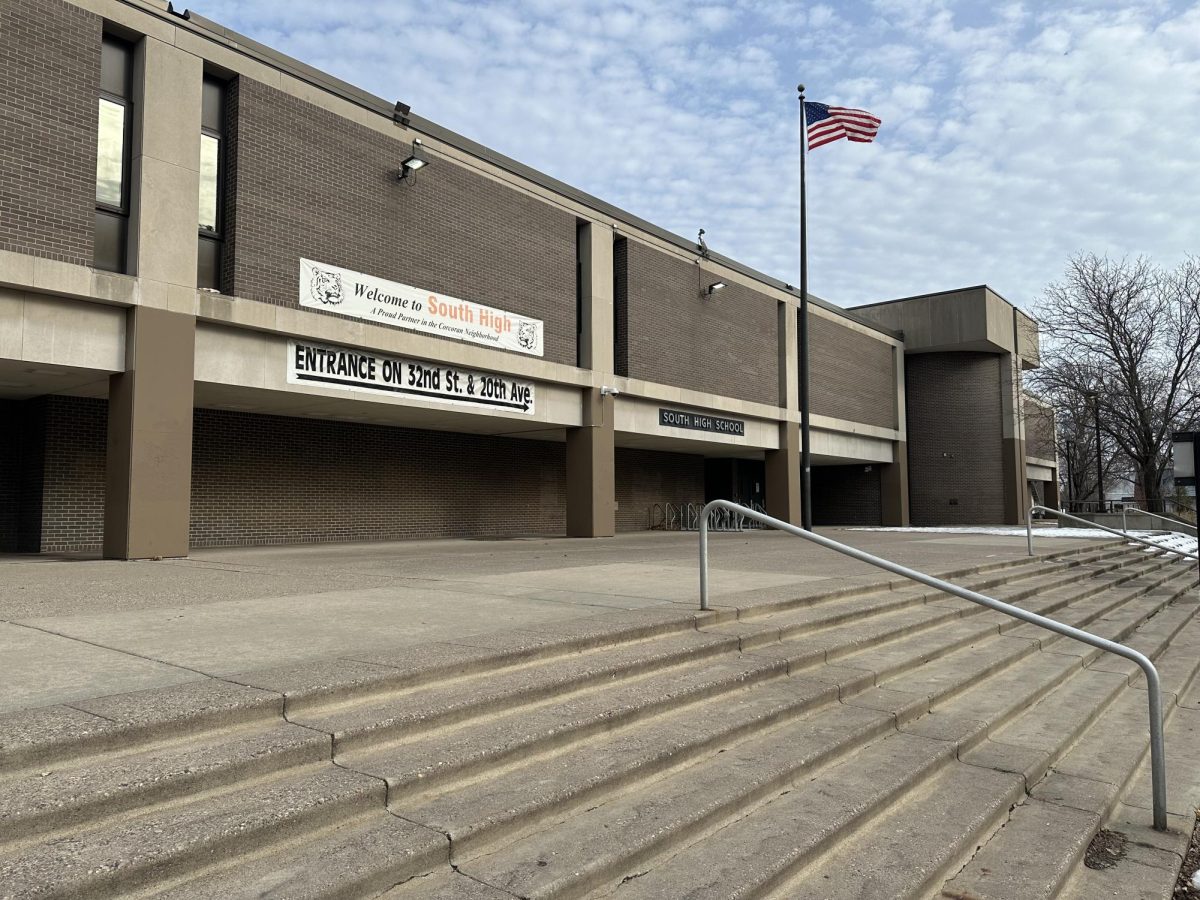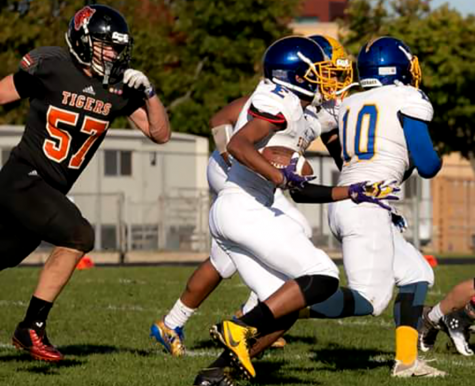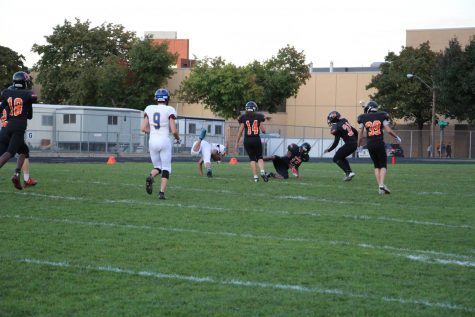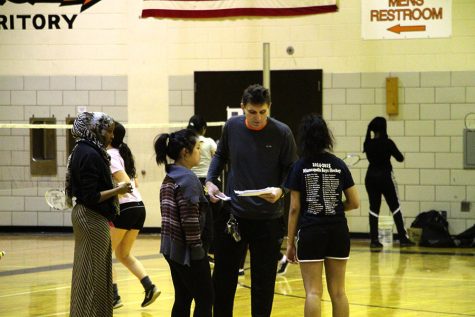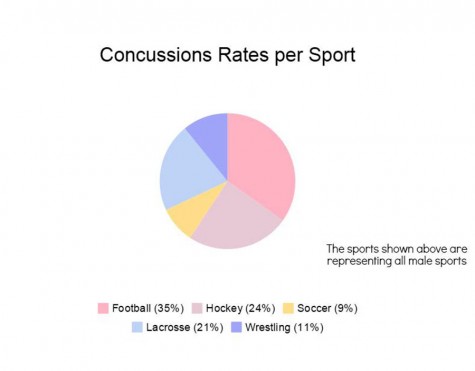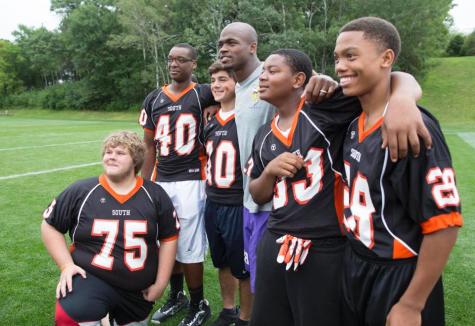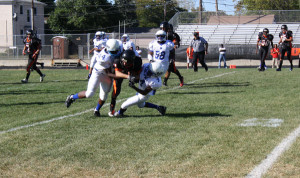Lack of injury prevention education endangers student athletes
November 11, 2013
A large number of student athlete injuries this year were caused by a lack of knowledge within South High School’s athletic programs. Sports teams here at South High are taken very seriously and these injuries have affected many coaches, teams, and the athletes themselves.
The Minneapolis Public School’s athletic trainer, Karin Shelstad, mentioned that there is “not a lot of discussion” about injury prevention. However, if the athletes wanted a thorough education to prevent injuries than they can ask and she “could provide that if wanted.”
Football, along with many other sports, has increasingly been associated with injuries. This year the football team was plagued by major injuries including a torn ACL, fractures, dislocated shoulder, and concussions.
This problem has caused the head coach of the men’s football team, Leonard Sedlock, to take increasing injury prevention very seriously. According to Sedlock, multiple posters in the locker rooms inform athletes of possible injuries, along with weekly in person injury prevention refreshers about the correct way to hit and use helmets. The team also does pre-practice warm ups to lower the chances of practice time injuries.
Sophomore Devin Hinden recently received a number of concussions in football that resulted in him leaving the football team and all other sports for the year.
“If I would have known that I had the other severe concussions… I probably would have quit,” Hinden stated. He went on to say, “I’ve only got one brain and I need to respect it.”
As far as he can recall, he was never taught injury prevention, although in this situation, injury prevention education wouldn’t have made a difference. His current concussion was caused by a helmet-to-helmet collision, which is considered “dirty” and couldn’t have been prevented by Hinden, or the teachings of his coach.
Elena Dooley, junior and varsity swimmer, participates in each practice and has competed in every swim meet but one, despite many injuries. She is struggling with rotator cuff tendonitis in her right shoulder, which will stay with her for her whole life.
The Cleveland Clinic of Orthopaedics and rheumatology states that rotator cuff tendonitis is an inflammation of the muscle group in the shoulder. After the muscle is repeatedly used and worn down it may tear or weaken. For example, swimming back stroke, which is Dooley’s strong suit, is a repetitive motion with the arm and shoulder.
The tendonitis was inflicted about two years ago during a rigorous summer of training that wore down muscle in her shoulder.
This led to Dooley’s long term injury that has been causing her problems ever since. In addition, a sliding disk in her back causes discomfort throughout the day, which was the result of her hours of non-stop swimming.
When Dooley talked about the major effects that these injuries have on her body, she said, “Sometimes I can’t swim if it hurts too much or there’s too much pain in my back or shoulders.”
She was taught injury prevention which consisted of stretching every night, monioring the condition of her muscles, icing areas of pain, and taking ibuprofen when in pain. Even with the severity of Dooley’s injuries she said that the coaches “push me to go through the pain” as much as possible.
Other athletes, such as cross country runners, suffer from a large number of injuries each year. Last year a chiropractor came in to talk to the runners about coming in to receive help. This was seen by most of the athletes as an “advertisement.”
The team viewed the presentation this way because the chiropractor didn’t focus on anything regarding injury prevention or health. The representatives simply told them that they could provide the athletes with their service.
The team does frequently talk about nutrition and stretching to help prevent injuries, according to junior Hannah Warling. She currently suffers from hip problems but has had issues with her ankle, knees, and shin splints as well.
“Your coaches, they don’t know how to help you,” said Warling when talking about injuries that you can’t prevent because of your personal body. That’s why she gets outside help for physical therapy.
South High takes pride in their athletics program but with the large number of injuries so far this year it makes some wonder whether athletes be taught more on the subject. Most players don’t think that much about the possible injuries in their sport, and are at risk of serious damage.
The way coaches teach their athletes effects the possibility of injury. Some are able to educate and prevent these possibilities, while others could pay more attention to the problem.
Shelstad explained that the idea of sitting down the athletes for injury prevention education has not been set as a concrete standard in South High’s athletic program, saying that there “could definitely be more.”

